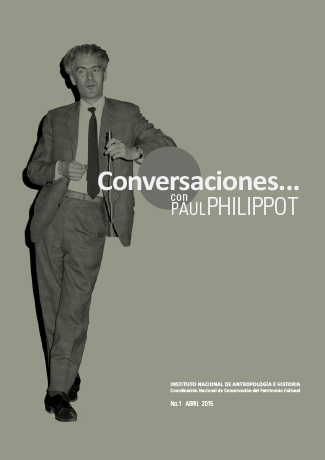Publicado 2017-05-25
Palabras clave
- Heritage conservation,
- significance,
- cultural expression,
- cultural diversity,
- international doctrine
Cómo citar
Resumen
The modern approach to the identification and safeguarding of heritage has had a major development from the second half of the 20th century. Starting from the definition of the work of art and monuments in the aftermath of the Second World War, the notions have broadened into creative cultural expression and cultural landscape.
At the same time, increasing attention has been given to heritage in its widest dimension, involving local communities in the conservation and management, respecting human rights, and taking into account the social and economic factors. This implies that heritage cannot be seen or preserved in isolation. Nor can it be the sole responsibility of the authority. Understanding heritage, cultural and natural, in its context is a learning process that has become a fundamental part of modern conservation practice.
Descargas
Referencias
- The Ministry of Education diffused this Charter of Restoration 1972 (Carta del Restauro) with a circular letter n. 117 of 6 April 1972 to all Superintendence offices and heads of autonomous institutions in Italy
- with the obligation to follow the instructions in a scrupulous manner in the restoration of any works of art.
- (All works of art, in their broadest meaning - from the urban environment to architectural monuments, paintings and sculptures, and from Palaeolithic remains to figurative expressions of folk cultures, need to be safeguarded in an organized and unbiased manner. This recognition necessarily leads to the preparation of technical-juridical norms that establish the limits within which conservation should be intended, whether as safeguard and prevention or restoration proper). (Translation by the author).
- In March 2015, the number of States that have ratified the convention is 191.
- Agnew, Neville and Martha Demas (eds.) (2002) Principles for the conservation of heritage sites in China, English edition, The Getty Conservation Institute, Los Angeles [http://www.getty.edu/conservation/publications_resources/pdf_publications/china_prin_2english.pdf] [accessed 18 January 2015]
- Audi, Robert (1995) “Value theory” in The Cambridge dictionary of philosophy, Cambridge University Press, Cambridge.
- Brandi, Cesare (1963) Teoria del restauro. Edizioni di Storia e Letteratura, Roma.
- Brandi, Cesare (2005) Theory of restoration. Nardini Editore, Firenze.
- Carta del restauro (1972).
- Council of Europe (1975) Charter on European architectural heritage.
- Declaration of Amsterdam (1975), concluding document adopted at the Congress on the European architectural heritage, 21 - 25 October 1975. [http:// http://www.icomos.org/en/charters-and-texts/179-articles-en-francais/ressources/charters-and-standards/169-the-declaration-of-amsterdam] [accessed 15 March 2015]
- Dewey, John (1934) Art as experience, Balch, New York.
- Dewey, John (1951) L’arte come esperienza, La Nuova Italia, Firenze.
- Feilden, Bernard. M. and Jukka Jokilehto (1998) Management guidelines for World Cultural Heritage Sites, ICCROM, Rome.
- Greffe, Xavier. n.d. The economic value of heritage, Paper presented at the University of Sorbonne, Paris [http://www.planningstudies.org/pdf/Raphael%20Greffe-%20E%20%28formatted%29.pdf] [accessed 30 December 2012]
- ICOMOS (1994) Nara document on authenticity. [http://www.icomos.org/charters/nara-e.pdf] [accessed 30 December 2012]
- ICOMOS Australia (1999) Burra Charter. The Australia ICOMOS Charter for places of cultural significance.
- ICOMOS Australia. [http://australia.icomos.org/wp-content/uploads/BURRA_CHARTER.pdf] [accessed 30 December 2012]
- ICOMOS Brasil (1987) Carta de Petropolis.
- ICOMOS Japanese National Committee (2000) Machinami Charter for the conservation of historic towns and settlements of Japan. Unpublished document adopted by the Japanese National Committee of ICOMOS (English translation by Dr. Yumi Isabelle Akieda).
- ICOMOS (2005) The World Heritage List: filling the gaps - an action plan for the future, Jukka Jokiletho (comp.)
- ICOMOS Monuments and Sites XII, Munich.
- INTACH (2004) Charter for the conservation of unprotected architectural heritage and sites in India. India Natural Trust for Art and Cultural Heritage. New Delhi.
- Jokilehto, Jukka (2012) Culture as a factor of development. Territori della Cultura, Ravello, numero 8, pp. 58-67. [http://quotidianoarte.it/Territori_della_Cultura_8/territori_della_cultura_8.html] [accessed 30 December 2012]
- Qufu Declaration (2005) Consensus on the China-specific conservation theory and practices of historic buildings. Unpublished document, adopted at the conclusion of a national conference on the Conservation theory and practice of historic buildings in China, Qufu, 2005.
- Riga Charter (2000) Riga Charter on authenticity and historical reconstruction in relationship to cultural heritage.
- ICOMOS Latvia, ICCROM.
- UNESCO (1972) Convention concerning the protection of the World Cultural and Natural Heritage. UNESCO, Paris.
- UNESCO (1976) Recommendation concerning the safeguarding and contemporary role of historic areas. UNESCO, Paris.
- UNESCO (1998) Reference document of the UNESCO World Heritage Session: WHC-98/CONF.201/INF.9. UNESCO, Paris. [whc.unesco.org/archive/1998/whc-98-conf201-inf9e.pdf] [accessed 15 March 2015]
- UNESCO (2003) Convention for the safeguarding of the intangible cultural heritage. UNESCO, Paris.
- UNESCO (2005) Convention on the protection and promotion of the diversity of cultural expressions. UNESCO, Paris.
- UNESCO (2011) Recommendation on historic urban landscapes. UNESCO, Paris.
- UNESCO (2012a) Operational guidelines for the implementation of the World Heritage Convention. UNESCO, World Heritage Centre, Paris.
- UNESCO (2012b) The Kyoto vision, concluding document adopted by the participants of the Conference in Kyoto, November 2012 to celebrate the 40th anniversary of the World Heritage Convention [http://whc.unesco.org/en/news/953] [accessed 18 January 2015]
- Venice Charter (1964) Charter for the conservation and restoration of monuments and sites. ICOMOS, Paris. [http://www.international.icomos.org/charters/venice_e.pdf] [accessed 18 January 2015]
- Vienna Memorandum (2005) Concluding document of the Conference on “World Heritage and Contemporary Architecture” held in Vienna from 12-14 May 2005 [whc.unesco.org/document/115812] [accessed 15 March 2015]

